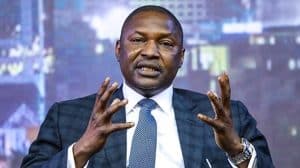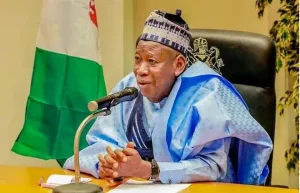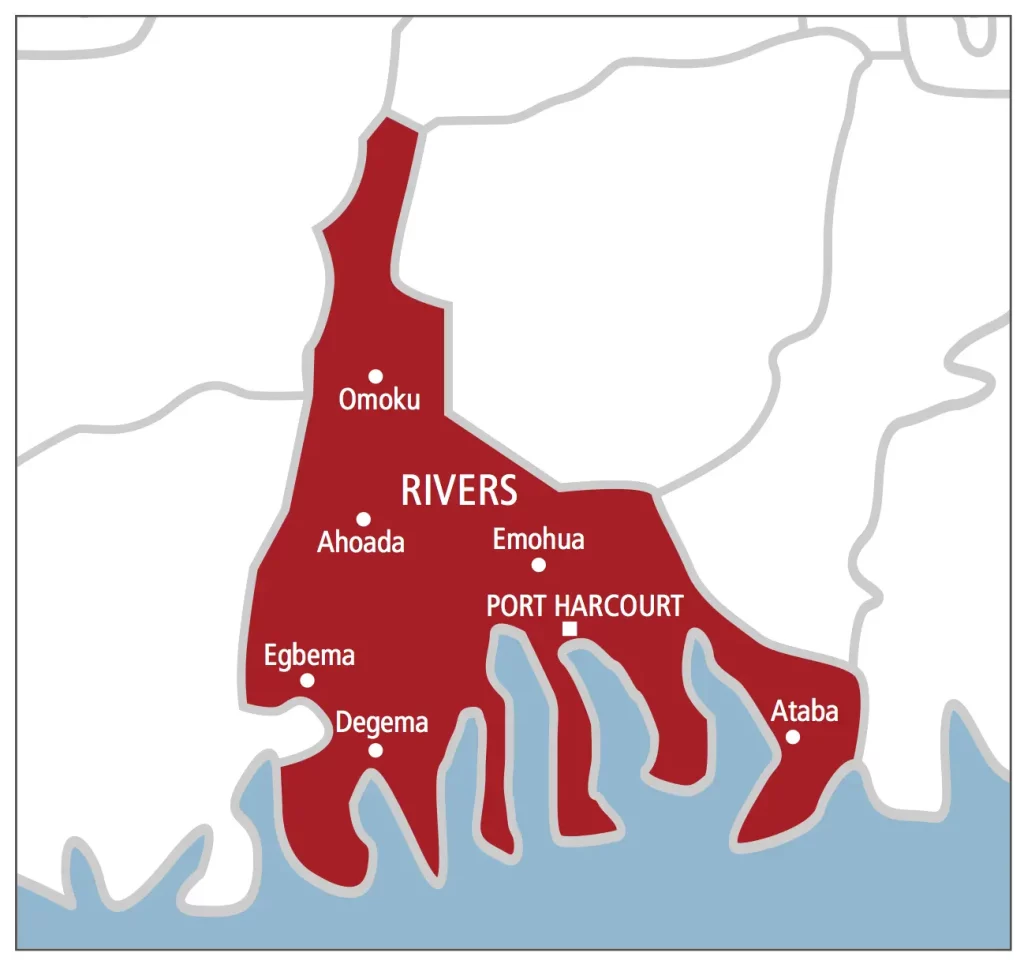There is no plan. America and the world just learned the scariest lesson about Donald Trump’s second term after a week of his capricious tariff war leadership. The fate of the US economy, the jobs and retirement savings of millions of people, and global security are liable at any moment over the next four years to be thrown into turmoil by the volatile moods and untested obsessions of the 47th president.
This time it was a self-induced economic meltdown. The next time it could be a national security crisis. Trump blinked on part of his tariff onslaught Wednesday — pausing reciprocal duties on dozens of nations and territories as the dire economic implications of his strategy began to accelerate.

But he typically atoned for his impetuousness with another escalatory act — hiking China’s tariff to 125% . While a surge of relief sent stock markets rocketing after days of losses, the showdown between the world’s two largest economic powerhouses could still tip the United States into recession. There are several ways to interpret Wednesday’s day of chaos, contradictions and spin by a White House that conjured a new reality to portray an embarrassing walk-back by the president as an act of leadership genius.
You could take the official version of events at face value — and believe that a stampede of grateful foreign powers are now offering attractive “deals” that will help America at their own expense. If that happens, Trump will have reshaped global trade like no modern president and delivered meaningful change for voters. Or, like Wall Street traders, you could take comfort that as the bottom threatened to fall out of the US economy on Wednesday, even Trump — who has removed all restraining influences from his second-term White House — stepped back in the knowledge that to persist in his course could trigger disaster.
But the may lie in the bond market. US Treasuries are often referred to as the world’s safest investment since they are guaranteed by the world’s largest economy, the almighty dollar and American credit. But a sell-off of US government bonds over the last 48 hours raised alarms about the impact of Trump’s tariffs.
In a metaphorical sense, investors were selling the idea that the United States, long a bedrock of the global economy, was a rock of safety. Their ebbing confidence encapsulated how Trump’s volatile style has turned the United States from a bastion of the world’s stability to one of its most destabilizing influences. Liberation Day lasted only a week Trump’s reversal was more shocking because his top aides had spent days — since his “Liberation Day” declaration of trade wars last week — insisting he’d never back down.
Indeed, after stock markets spiked on Monday on rumors of a 90-day tariff pause, the White House branded the report “fake news.” In a rollercoaster week since reciprocal tariffs were announced, retirees endured the agony of seeing their 401(k) plans drain. Some Americans were laid off as companies battened down against a possible recession.
But as it turned out all this suffering needn’t have happened. Trump folded after his gambit failed. Farcical scenes played out in Washington.
US Trade Representative Jamieson Greer was spending a second day testifying to Congress on what the Trump White House insisted was a trade “emergency” that needed unprecedented action. But he learned about his boss’ about-face during the hearing, in an episode that shattered his credibility in future trade talks. Treasury Secretary Scott Bessent emerged from a meeting with Trump insisting that pausing tariffs was the plan all along .
“It was the president’s decision to wait until today,” he said. “No one creates leverage for himself like President Trump.” This crisis might suggest that Bessent — seen by Wall Street as a safe pair of hands — has prevailed over Trump’s more incendiary economic gurus, like trade adviser Peter Navarro.
But shortly after Bessent spoke, the president undermined his treasury secretary by making it clear he was improvising again. “The bond market is very tricky. I was watching it.
But if you look at it now, it’s beautiful. The bond market right now is beautiful. But yeah, I saw it last night where people were getting a little queasy,” he said.
CNN’s Phil Mattingly and Alayna Treene later cited three sources familiar with the matter confirming that distress in the bond market was a major factor in Trump’s decision to halt the reciprocal tariffs. But the mixed messages and contradictions kept coming. Commerce Secretary Howard Lutnick, one of the most bombastic defenders of “Liberation Day” appeared on CNBC.
“What a great day for America,” he said. Asked whether markets had forced Trump’s hand, he said: “Absolutely not, absolutely not.” ‘Master strategy’ Personality cults require the great leader to be praised to the skies whatever he does, even if he contradicts himself.
Last week, Bessent lauded Trump for signing the “Declaration of Economic Independence for the American People.” Exactly a week later, with the tariffs only in effect for 12 hours before they were paused, he lionized the president for doing the reverse. “It took great courage — great courage for him to stay the course until this moment,” Bessent told reporters at the White House.
The Republican spin machine went into overdrive to preserve the mythology of the art of the deal. “When you are playing poker, you don’t show your hands,” GOP Rep Greg Murphy, a member of the House Ways and Means Committee, told CNN’s Brianna Keilar. “Playing poker with the rest of the world so that we can win .
.. is what the goal is.
” White House adviser Stephen Miller sensed genius afoot. “You have been watching the greatest economic master strategy from an American President in history,” he wrote on X. But no one’s better at the sorcery of turning defeat into victory than Trump.
“You have to have flexibility,” Trump said, explaining his methods. “I could say here’s a wall and I’m going to go through that wall. I’m going to go through it no matter what and keep going, and you can’t go through the wall.
Sometimes you have to be able to go under the wall, around the wall or over the wall.” Later, Trump confirmed that pausing tariffs had not been the long-term plan, saying it came together Wednesday morning. “We didn’t have access to lawyers or .
.. it was just wrote up.
We wrote it up from our hearts, right?” he said. Trump spoke as he signed two executive orders. One ordered the Justice Department to investigate two officials who criticized him during his first term, Chris Krebs and Miles Taylor.
The other dismantled water saving regulations by ending what the order described as the “Obama-Biden war on showers.” This was all a perfect microcosm of a presidency driven by Trump’s obsessions, which include weaponizing justice against his enemies as well as almost comical initiatives that many of his predecessors might view as trivial. With US policy in disarray, what’s next? All eyes will be on China’s response to yet another tariff hike on its imports to the US — which makes trade between the world’s two largest economies unviable and could send markets plummeting again.
One lesson China might draw from Wednesday’s mayhem is that Trump backed down when faced with the consequences of his policies. It will also note the disturbance in the bond markets as one of the largest foreign holders of Treasury securities. China has already signaled it’s ready to fight to “the end” in the trade war.
And President Xi Jinping’s credibility and that of his nationalist project to restore China’s respect and influence are now squarely on the line. As an authoritarian leader he may be ready to inflict more pain on Chinese nationals than Americans will bear from Trump. While China’s manufacturing base could be severely hurt if its exports to the US dry up, the tariffs will hammer US shoppers.
A dip in consumer spending could help tip the US economy into a downturn. And other tariffs that could throw the US economy into reverse are also in place — for instance those targeting Canada and Mexico. After pausing reciprocal tariffs, Trump decided to impose a blanket tariff of 10% on all imports — which could still slow growth and which represents a considerable unofficial tax on American consumers.
While the White House took a victory lap on Monday, it hasn’t made any trade deals yet. Countries might be ready to talk, but they might now suspect Trump was bluffing with his vow to punish them. Perhaps Trump will be as good as his word in exacting confessions that boost US businesses.
But Washington’s demands may be too optimistic. The US, for instance, wants nations like Australia and those in the European Union to admit hormone-treated US meats — but leaders who agree will do so at their political peril. And the negotiations undermine another supposed goal of Trump’s trade “revolution” — the idea he can revive early mid-20th century heavy industry.
This is a laudable goal, but agreements that preserve European and Asian manufacturing will mean there’s no return to the golden age of US factories. Still, the retention of the 10% tariff might turn into a political win in one sense for the administration. This looks less onerous given Trump’s row back from higher reciprocal tariffs, and foreign nations might accept it as the price of doing business.
The proceeds of the duties might then be used to finance Trump’s ambitious tax cuts — even though he’ll be simply reimbursing taxpayers for money they’ve already spent on higher prices for goods. And always with Trump, there’s no guarantee that his decision is the last word — one reason that foreign trading partners and investors might start giving the volatile US a pass. After all, what really happened on Wednesday that the president claimed a famous victory for avoiding a looming catastrophe he caused.
“No other president would have done what I did,” Trump said. He’s got that right..















